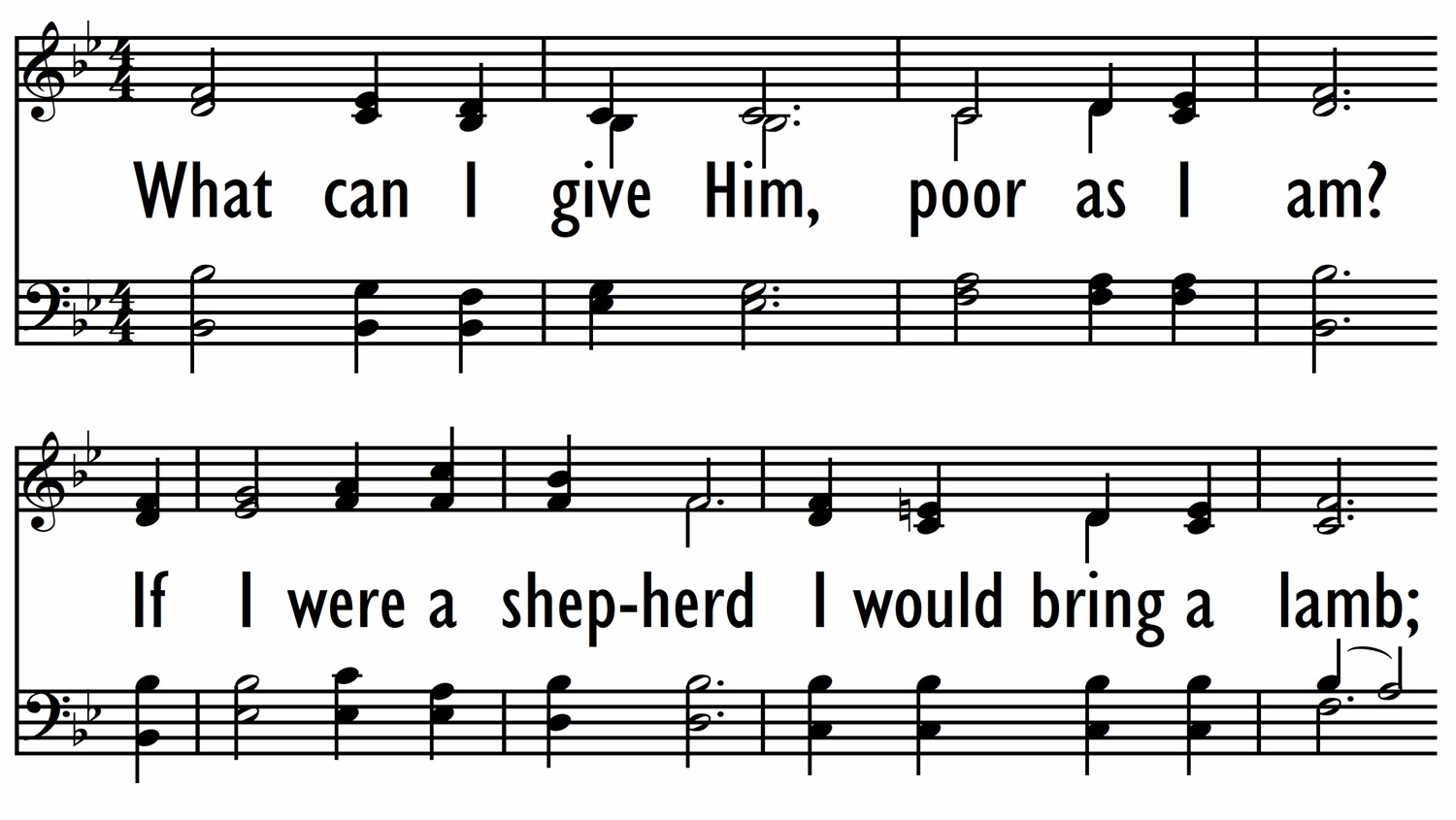Home>Production & Technology>Audiobook>What Page Am I On In My Audiobook Based On The Chapter


Audiobook
What Page Am I On In My Audiobook Based On The Chapter
Modified: January 22, 2024
Discover which page you are on in your audiobook based on the current chapter with this handy guide. Navigate through your audiobook effortlessly.
(Many of the links in this article redirect to a specific reviewed product. Your purchase of these products through affiliate links helps to generate commission for AudioLover.com, at no extra cost. Learn more)
Table of Contents
- Introduction
- Understanding Audiobook Navigation
- Chapter Information in Audiobooks
- Determining What Page You’re on in an Audiobook
- Methods for Tracking Your Progress
- Using the Chapter and Time Indicators
- Utilizing the Audiobook App’s Navigation Features
- Bookmarking Chapters for Easy Reference
- Other Techniques for Keeping Track of Your Location
- Conclusion
Introduction
As audiobooks continue to gain popularity, more and more people are discovering the joy of immersing themselves in captivating stories and informative non-fiction works while on the go. Unlike physical books, where turning pages allows you to easily keep track of your progress, audiobooks require a different approach to determine your location within the book. One common question that audiobook enthusiasts often ask is, “What page am I on in my audiobook based on the chapter?
In this article, we will explore various methods for tracking your progress in an audiobook and understanding your location within the book based on the chapter. Whether you’re listening to a gripping mystery novel, a self-help book, or a thought-provoking memoir, knowing where you are in the audiobook can enhance your overall listening experience.
Understanding how chapter information is presented in audiobooks is crucial to identifying your location. We’ll delve into the different ways audiobooks provide chapter information, such as through chapter titles, numbers, or a combination of both. This information will serve as a foundation for the methods we’ll discuss later on.
While some audiobook apps and devices offer specific features to track your progress, others require you to employ alternate techniques. We’ll explore the use of chapter and time indicators within your audiobook app, as well as bookmarking chapters for easy reference. Additionally, we’ll cover other techniques you can employ to keep track of your location, such as taking notes, using outside resources, or employing your own memory.
By the end of this article, you’ll have a clear understanding of how to determine what page you’re on in your audiobook based on the chapter. So, let’s dive in and discover the ways to navigate your audiobook effectively!
Understanding Audiobook Navigation
Navigating through an audiobook is different from flipping through the pages of a physical book. While physical books have clearly defined pages, audiobooks offer a more fluid experience with chapters and timestamps. Understanding how audiobook navigation works is crucial for determining your location within the book.
Audiobook navigation typically revolves around chapters. Audiobook chapters are similar to chapters in a physical book, dividing the content into manageable sections. Each chapter may have a unique title or number, and they serve as important markers for tracking your progress.
Chapter information can be presented in different ways depending on the audiobook format and the platform you’re using. Some audiobooks announce the chapter titles or numbers at the beginning of each chapter or when you navigate to a new chapter. Others may display this information in the audiobook app’s interface or offer an option to view the chapter listing.
It’s important to note that not all audiobooks have explicit chapter information. Some audiobooks, particularly older ones or those produced independently, may not include chapter breaks or clear indications of their location within the book. In such cases, tracking your progress may require a different approach, which we’ll explore in later sections.
Having a clear understanding of the audiobook navigation system and how chapter information is presented in your specific audiobook will greatly assist you in determining your location within the book.
Chapter Information in Audiobooks
Chapter information plays a vital role in helping you identify your location within an audiobook. The way chapter information is presented can vary across different audiobook formats and platforms. Let’s explore some common methods of providing chapter information in audiobooks:
- Chapter Titles: Many audiobooks include unique titles for each chapter. These titles can provide insights into the content of the chapter and make it easier to remember key moments in the book. When chapter titles are available, you can refer to them to determine your location within the audiobook. Some audiobook apps even display the chapter titles alongside the playback controls for easy reference.
- Chapter Numbers: Another common method of providing chapter information is through numerical identifiers. Each chapter is assigned a specific number that gradually increases as you progress through the audiobook. Some audiobook apps or devices may display the chapter numbers in the playback interface or offer a separate chapter listing that shows the corresponding numbers.
- Combination of Titles and Numbers: In certain audiobooks, chapter information may be presented using a combination of titles and numbers. This approach provides both the context of the chapter content through a title and the sequential order with a number. Using this combined information allows for easier tracking of your location within the book.
It’s important to note that not all audiobooks include explicit chapter information. Older audiobooks or those produced independently might lack defined chapters or clear indications of their location. In such cases, you may need to rely on other methods, such as time indicators or specific markers within the audio, to determine your progress within the book.
Being familiar with the chapter information provided in your audiobook and knowing how to access it will greatly assist you in identifying your location within the book based on the chapter.
Determining What Page You’re on in an Audiobook
Unlike physical books that have clearly defined pages, determining the page you’re on in an audiobook can be a bit more challenging. Audiobooks are measured in time rather than pages, as the pace of listening can vary depending on the speed at which you listen and any breaks you take.
However, there are several methods you can use to estimate your progress and determine what “page” you’re on in your audiobook:
- Chapter Length: Pay attention to the length of each chapter in your audiobook. If you know the total number of chapters, you can estimate your progress based on the percentage of chapters you have completed.
- Total Time: Most audiobook apps or devices display the total duration of the audiobook. You can divide this time by the percentage of the book you have completed to estimate your current position. For example, if the audiobook is 10 hours long and you have completed 50%, you can estimate that you are about 5 hours into the book.
- Time Indicators: Pay attention to any time indicators mentioned within the audiobook itself. Some audiobooks mention the current time at specific intervals or provide time references for significant events. By noting these time references, you can have a rough idea of where you are in the book.
- Contextual Clues: Listen for contextual clues within the narration that can help you gauge your progress. If the narrator refers to earlier events or mentions specific story developments, you can infer that you are further into the book.
It’s important to remember that determining the exact “page” you’re on in an audiobook may not always be possible due to the fluid nature of audio content. However, by utilizing these methods, you can get a general sense of your progress and feel more connected to the overall structure of the book.
Methods for Tracking Your Progress
Tracking your progress in an audiobook is essential for keeping up with the story and easily returning to where you left off. Here are some effective methods you can use to track your progress and ensure a seamless listening experience:
- Chapter and Time Indicators: Pay attention to the chapter and time indicators mentioned within the audiobook. Many audiobooks announce the beginning of each chapter or provide time references at regular intervals. When you hear these indicators, you can note them down or make a mental note of your progress. This method allows you to easily reference your position in the audiobook later on.
- Audiobook App’s Navigation Features: Take advantage of the navigation features offered by your audiobook app or device. Most apps allow you to see the current chapter, elapsed time, and remaining time in the book. Some apps even provide a progress bar that visually represents your position in the audiobook. Make sure to familiarize yourself with these features and use them to track your progress effectively.
- Bookmarking Chapters: Utilize the bookmarking feature available in many audiobook apps to mark specific chapters or moments that stand out to you. By bookmarking important sections, you can easily return to them later and have a visual reference of your progress in the audiobook.
- Taking Notes: If you prefer a more hands-on approach, consider taking notes while listening to the audiobook. Jot down key events, memorable quotes, or significant plot developments. Not only will this help you track your progress, but it will also serve as a personal reference for later discussions or reflections.
- Using External Resources: In some cases, you may find it helpful to use external resources to track your progress. This can include audiobook summary websites, forums, or online communities where fellow listeners discuss specific chapters or milestones in the book. Engaging with these resources can provide you with valuable insights and confirm your progress within the audiobook.
By adopting these methods, you can effectively track your progress in an audiobook and have a clear sense of where you are within the story. Experiment with different techniques to find the approach that suits your preferences and enhances your overall listening experience.
Using the Chapter and Time Indicators
Chapter and time indicators are invaluable tools in tracking your progress and determining your location within an audiobook. By paying attention to these indicators, you can easily keep track of your progress and seamlessly resume listening from where you left off. Here’s how you can effectively use chapter and time indicators:
Chapter Indicators: Audiobooks often announce the beginning of each chapter, either by stating the chapter number or title. By noting these chapter indicators, you can keep track of which chapter you are currently listening to. Some audiobook apps or devices even display the current chapter on the screen, making it easy to reference and remember.
Time Indicators: Time references within the audiobook can provide additional context and help you determine your location. Audiobooks may mention the current time at regular intervals or reference specific time markers for significant events. Pay close attention to these time indicators, as they can help you estimate your progress in relation to the overall duration of the audiobook.
For example, if you hear the narrator mention that you’re one hour into the audiobook and the total duration is ten hours, you can deduce that you’re roughly 10% of the way through the book.
Many audiobook apps also display the elapsed time and remaining time, allowing you to have a visual representation of your progress. You can use this information to estimate how much of the audiobook you have already listened to and how much is left.
By utilizing both the chapter and time indicators, you can ensure that you always know where you are in the audiobook. This knowledge will make it easier for you to navigate to specific sections or return to your listening position after taking a break.
Remember to make a mental note or jot down the chapter and time indicators when you pause your audiobook, so you can easily pick up from where you left off when you’re ready to continue.
Overall, chapter and time indicators are valuable tools that provide essential markers for tracking your progress and maintaining your engagement with the audiobook. Incorporate them into your listening routine, and you’ll have a clearer understanding of your location within the book.
Utilizing the Audiobook App’s Navigation Features
Modern audiobook apps come equipped with a range of navigation features designed to enhance your listening experience and make it easier to track your progress. By familiarizing yourself with these features, you can efficiently navigate through the audiobook and easily determine your location. Here are some key navigation features to look out for and utilize:
Chapter Selection: Most audiobook apps provide a chapter selection feature that allows you to jump to a specific chapter quickly. This feature can come in handy when you want to go back to a particular chapter to revisit a section or skip ahead to a later chapter. By using the chapter selection feature, you can easily identify the chapter you’re currently on and navigate to other chapters as needed.
Elapsed and Remaining Time: Audiobook apps often display the elapsed time and remaining time in the audiobook. This information gives you a clear idea of how much time you’ve spent listening and how much time is left. By referencing the elapsed and remaining time, you can estimate your progress within the audiobook and track your location accordingly. Some apps also provide a progress bar that visually represents your position in the audiobook.
Bookmarks: Take advantage of the bookmarking feature offered by many audiobook apps. Bookmarks allow you to mark specific sections, chapters, or moments in the audiobook that you want to return to later. When you bookmark a particular segment, the app remembers the location for easy reference. This feature is especially useful when you want to track your progress in moments of particular interest or significance.
Speed Control: Audiobook apps often provide the option to adjust the playback speed, allowing you to listen at a faster or slower pace. While this feature may not directly assist in tracking your progress, it can affect your overall listening experience. Experimenting with different playback speeds can help you find a rhythm that suits your preferences and allows you to follow the audiobook more accurately.
Take the time to explore and familiarize yourself with the navigation features available in your audiobook app. Every app may have a slightly different interface and set of features, so understanding how to utilize them effectively will greatly enhance your ability to track your progress and determine your location within the audiobook.
By utilizing these navigation features, you can have a more immersive listening experience and easily reference your location in the audiobook. Experiment with different features and find the navigation tools that work best for you.
Bookmarking Chapters for Easy Reference
One effective method for tracking your progress and easily referencing specific sections in an audiobook is by utilizing the bookmarking feature provided by many audiobook apps. Bookmarking allows you to mark chapters or moments within the audiobook, making it effortless to return to those sections later. Here’s how you can effectively use bookmarks:
Marking Significant Chapters: When listening to an audiobook, you may come across chapters that contain important plot developments, memorable quotes, or intriguing cliffhangers. By bookmarking these significant chapters, you can easily reference them in the future and quickly dive back into the story from a particular point of interest.
Flagging Favorite Passages: Audiobooks often have beautifully written passages, inspirational quotes, or thought-provoking ideas. When you encounter such moments that resonate with you, make use of the bookmarking feature to flag these passages. This way, you can easily revisit them for inspiration or to share with others.
Keeping Track of Progress: Bookmarking chapters is an excellent way to visually track your progress within an audiobook. By periodically bookmarking the chapters as you listen, you’ll have a visual representation of how far you’ve come. This can be particularly useful when taking breaks and wanting to resume listening from a specific point.
Easy Reference for Discussions or Reviews: If you’re part of a book club or engage in discussions about the audiobook, bookmarks provide a convenient way to reference specific chapters or moments. By bookmarking important sections or moments, you can easily navigate back to them when discussing the book with others, ensuring accurate references and enriching the conversation.
Remember to explore the bookmarking feature in your audiobook app and familiarize yourself with how to create, access, and manage bookmarks. Some apps even allow you to add notes or labels to bookmarks, providing additional context and making it even easier to find relevant sections later on.
Using bookmarks as a tracking tool not only helps you navigate through the audiobook but also allows you to create a personalized reference guide. By organizing your bookmarks strategically, you can ensure a seamless listening experience and easily pick up from where you left off, even if it’s been a while since your last listening session.
Make the most out of the bookmarking feature in your audiobook app and enjoy the ease of referencing specific chapters and moments in your favorite audiobooks.
Other Techniques for Keeping Track of Your Location
While chapter and time indicators, as well as bookmarking, are common and effective methods for tracking your progress in an audiobook, there are other techniques you can employ to keep tabs on your location within the book. These techniques can be particularly useful when dealing with audiobooks that do not provide explicit chapter information or for those who prefer alternative methods of tracking progress. Here are some additional techniques to consider:
Take Notes: Keep a notepad or digital document handy while listening to the audiobook. Jot down key moments, character developments, or any other noteworthy details that can serve as markers of your progress. These notes can act as a reference guide when you need to pinpoint your location within the book or when you want to recall important events.
Use External Resources: Utilize audiobook summary websites, online forums, or book club discussions to gather information about the audiobook’s structure. These resources often provide chapter breakdowns, summaries, or discussions that can give you an idea of where you are in the book. Engaging with fellow listeners or reading chapter summaries can be particularly helpful when dealing with audiobooks that lack explicit chapter information.
Listen Actively: Pay close attention to the narration and immerse yourself in the audiobook. Actively listening can help you establish a mental map of the audiobook’s progression. By recognizing key events, character arcs, or shifts in the narrative, you can estimate your location within the book based on your understanding of the story’s development.
Develop Memory Techniques: Train yourself to recall specific details or significant plot points in the audiobook. By consciously reinforcing your memory during and after listening sessions, you can better gauge your progress and have a clearer sense of your location within the book. Memory techniques, such as visualization or repetition, can assist in solidifying your understanding of the audiobook’s structure.
Utilize Chapter Descriptions: Some audiobooks include brief descriptions or summaries of each chapter. These descriptions can be found in the audiobook’s table of contents or in the accompanying written material. By referring to these chapter descriptions, you can gain insights into the content and use them as reference points to estimate your progress.
Remember that different techniques work for different individuals, so find the method or combination of methods that align with your preferences and listening style. By employing these additional techniques, you can maintain a clear understanding of your location within the audiobook and have a more engaging listening experience.
Conclusion
Navigating an audiobook and determining your location based on the chapter is an important aspect of your listening experience. While audiobooks do not have physical pages like printed books, there are various methods and techniques you can utilize to track your progress and keep tabs on your position within the story.
In this article, we explored different ways to understand audiobook navigation and noted the significance of chapter information. We discussed methods such as utilizing chapter and time indicators, taking advantage of the navigation features in audiobook apps, bookmarking chapters, and employing other techniques to enhance your tracking abilities.
By paying attention to chapter titles, numbers, and time references, you can estimate your location within the audiobook. Utilizing the navigation features provided by audiobook apps allows for easy referencing and quick resumption of your listening experience. Bookmarks provide a straightforward method for marking significant chapters or passages, while alternative techniques such as note-taking and engaging with external resources contribute to a holistic approach in tracking progress.
Remember that the effectiveness of these methods may vary depending on the audiobook format and individual preferences. It’s important to experiment with different techniques and find the ones that work best for you. By actively engaging with your audiobook, maintaining a sense of the story’s structure, and employing the tracking methods discussed, you can enjoy a more immersive and satisfying listening experience.
So, the next time you find yourself wondering what page you’re on in your audiobook based on the chapter, use the insights and techniques shared in this article to confidently determine your location and fully enjoy the journey through the captivating world of audiobooks.











